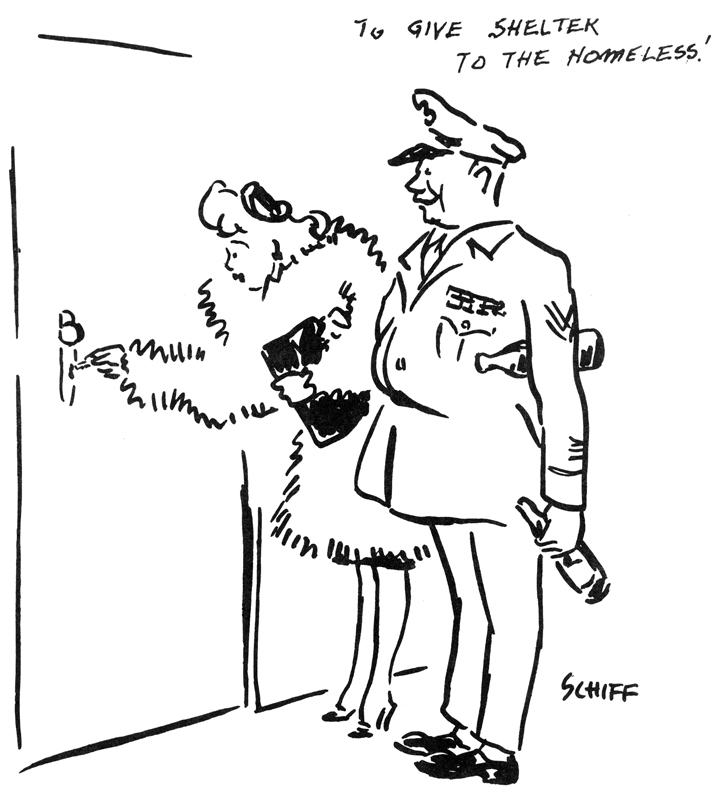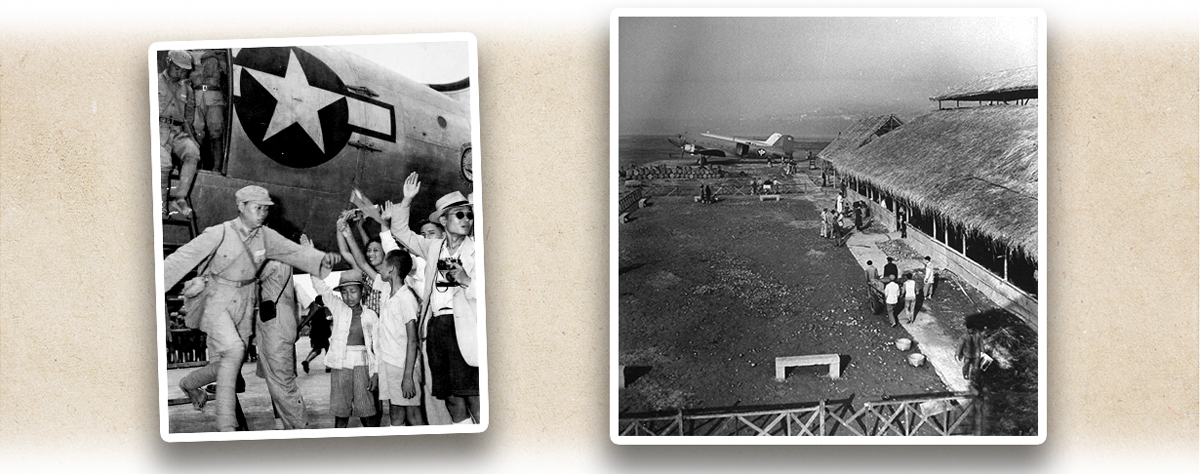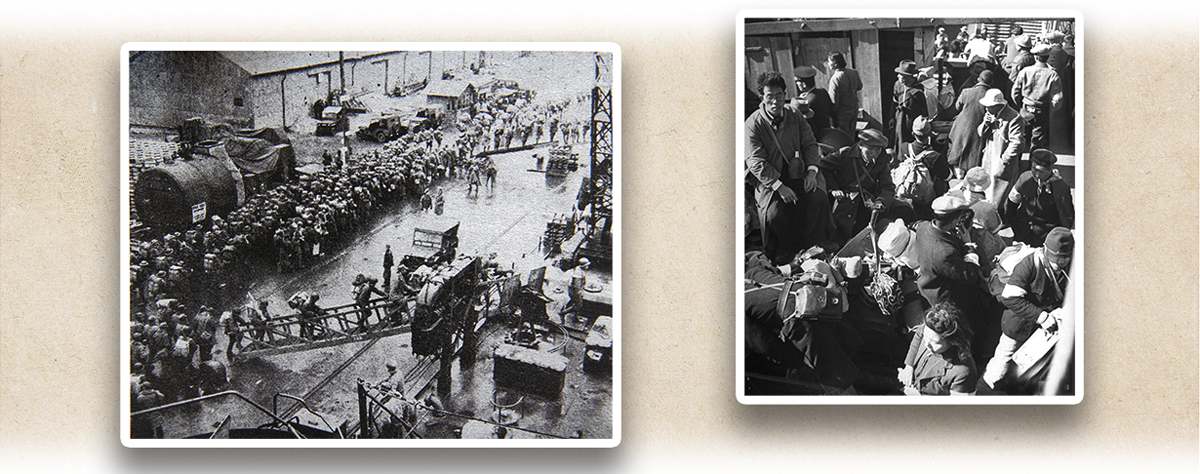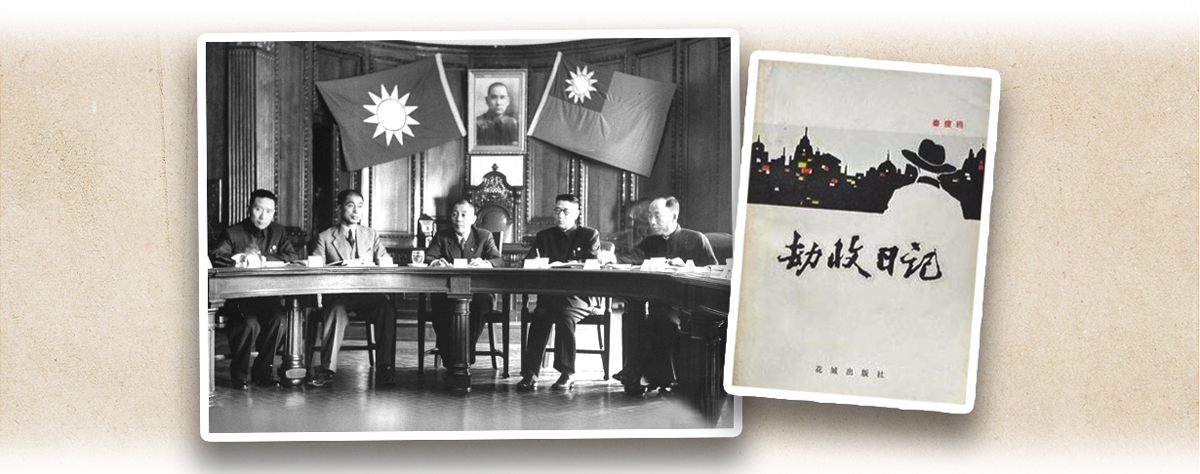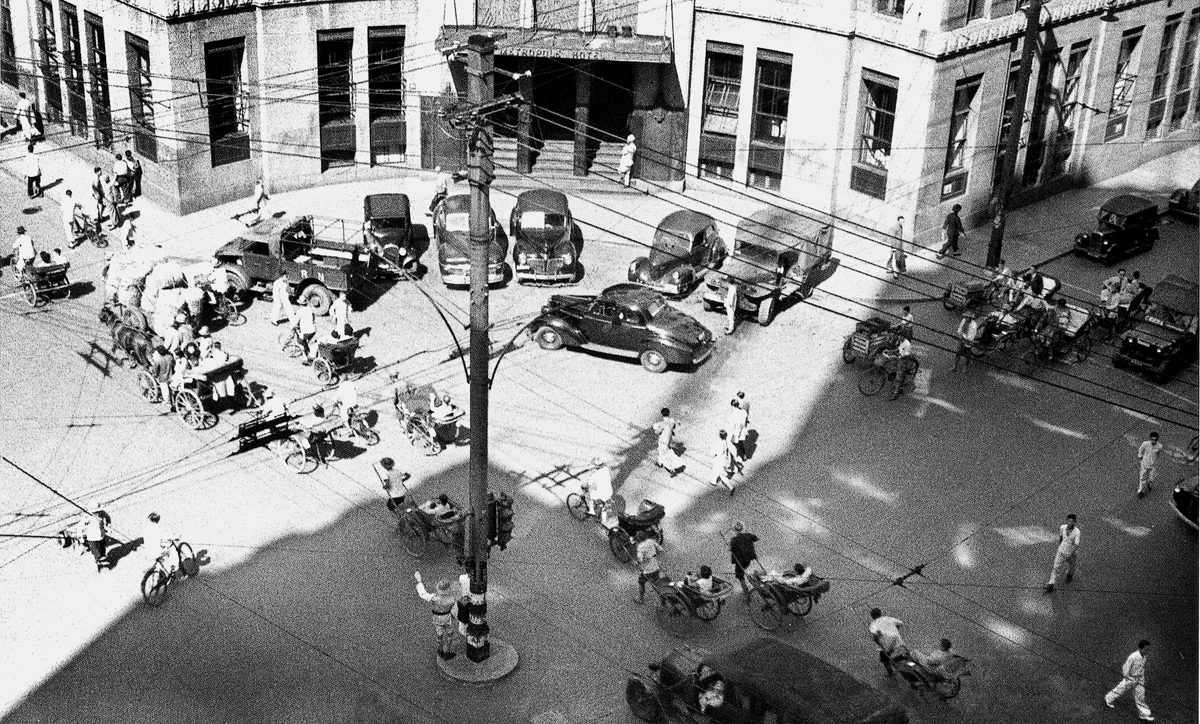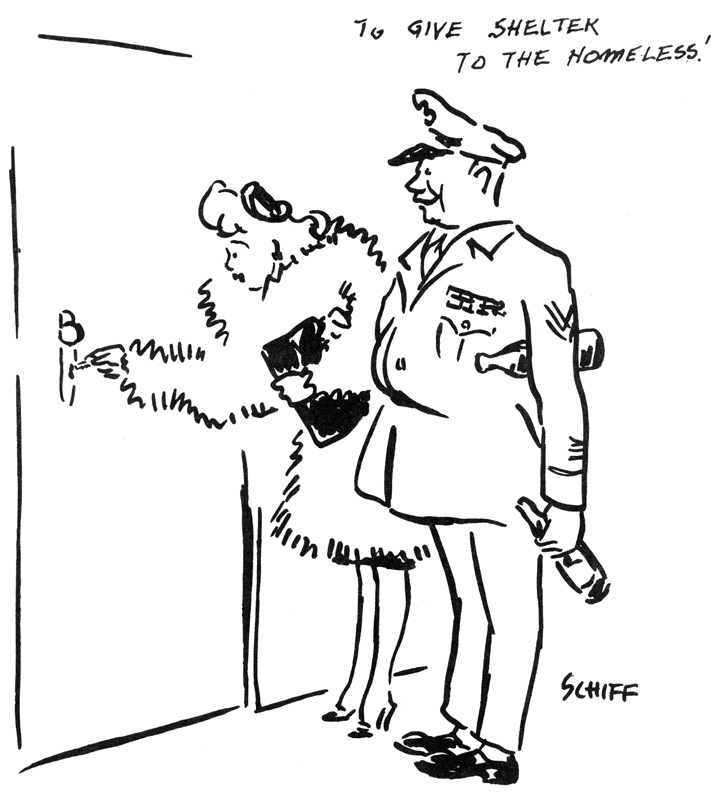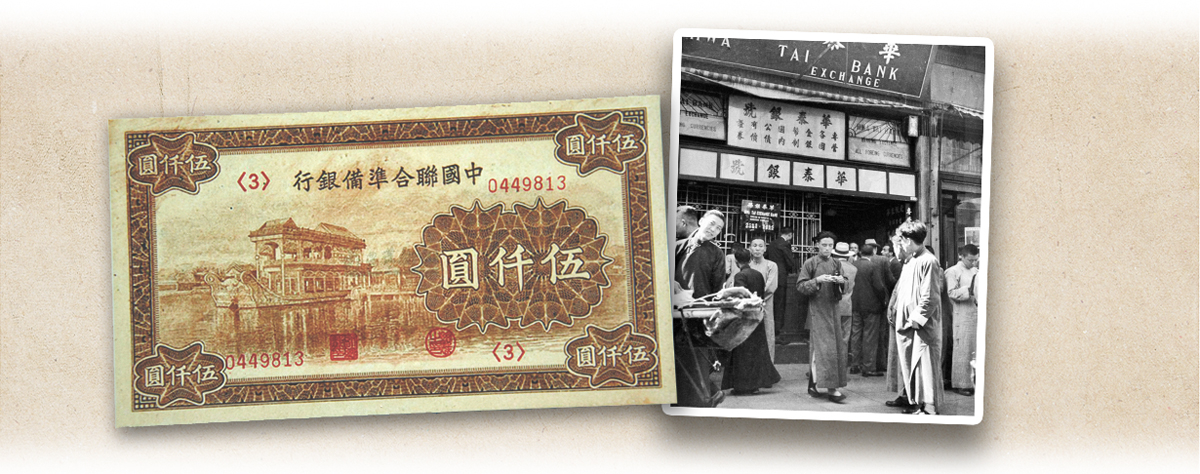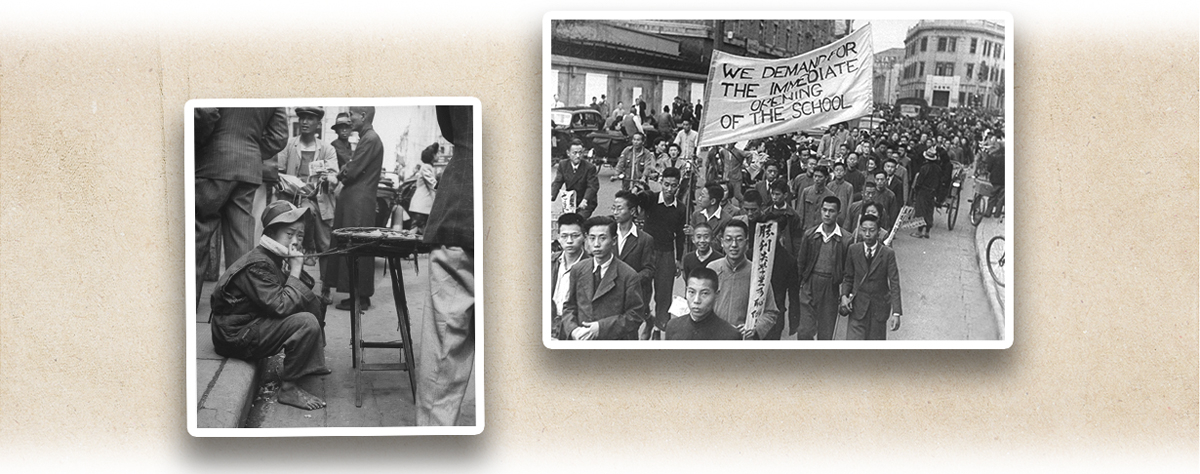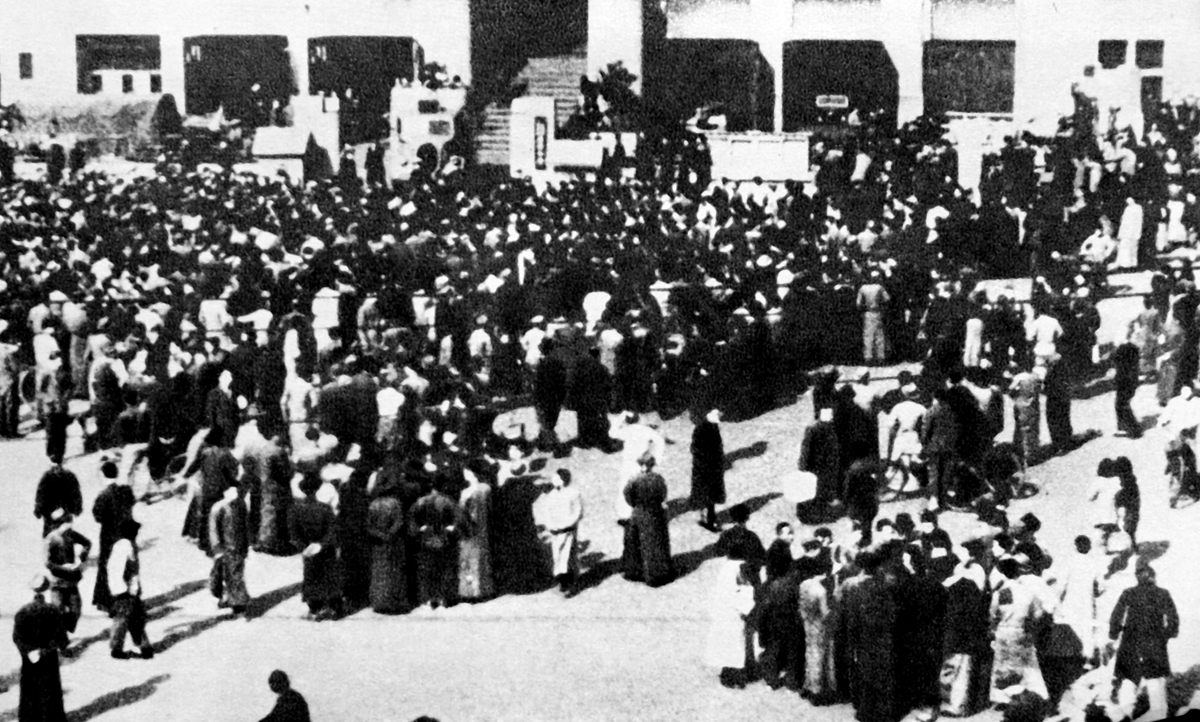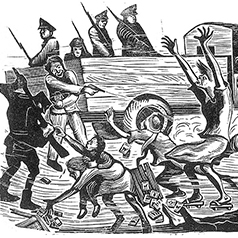After its triumph in the War of Resistance Against Japanese Aggression, China was in dire need of peace, development, and a return to normal life. One of the primary tasks at that time was to accept the surrender of the Japanese and its puppet regimes, confiscate equipment and supplies, and restore governance. In addition to conflicts between the Kuomintang of China (KMT, 中國國民黨) and the Chinese Communist Party (CCP, 中國共產黨) over the terms of surrender and territorial control, the biggest issue was the takeover policy and the morality of the KMT officials involved in the takeover operation.
At that time, the KMT-led political and military departments of the Nationalist Government dispatched various committees to the large and medium-sized cities in the formerly enemy-occupied territory, such as the Committee for Takeover of the Japanese Puppet Regime’s Organisations and Assets, the Committee for Disposal of Real Estate, and the Committee for Disposal of the Japanese Puppet Regime-occupied Civilian Industrial and Commercial Enterprises, to name but a few.
Suddenly realising the opportunity to capture a windfall, many leading officials, who had been staying in the rear area for many years, used their power to make a quick fortune through fraud and embezzlement. The enemy property or traitors’ property, ranging from houses and cars to factories and enterprises, could easily become private property through confiscation simply by attaching a seal to them. For example, a director of a KMT-led department in Shanghai (上海) pocketed more than 1,000 houses, 800 to 900 cars, more than 10,000 gold bars, and countless jewels. Many officials also reaped handsome profits by exploiting the huge difference between fabi (法幣, legal currency issued by the banks of the Nationalist Government) and the currency issued by the puppet regimes. This kind of “takeover” operation, often humourously referred to as a sure-fire ticket to worldly riches, including gold, houses, money, cars, and prostitutes (the wives and concubines of traitors), was widespread in Mainland China and degenerated into a “big plunder”.
People in the formerly enemy-occupied areas were disillusioned as they tasted the hardship brought about by the central government after its return. Amid a chorus of victory, a ticking time bomb was set for the defeat of the KMT in civil war. In his reflections, the KMT leader Chiang Kai-shek (蔣介石) said, “We were doomed to fail starting from the takeover.” The deviant “takeover” even led to the February 28th Incident in Taiwan (台灣), with lasting consequences.
|
|
Why did people in the formerly enemy-occupied territory refer to the KMT’s post-war takeover operation as Wu Zi Deng Ke (五子登科), meaning “a celebration of five sons’ (Wu Zi) accomplishments (Deng Ke)”? How did this expression originate and evolve over the years? |
|
|
See answer below. |
When Japan surrendered and its puppet regimes collapsed in August 1945, the Nationalist Government ramped up its efforts to take over the formerly enemy-occupied territory, primarily the major cities of Beiping (北平, now Beijing ﹝北京﹞), Tianjin (天津), Shanghai, Nanjing (南京), and Guangzhou (廣州). Left: the first Chinese troops arriving in Shanghai for the takeover are greeted by a crowd on 14 September 1945; Right: a special plane carrying central government officials flying from the temporary capital Chongqing (重慶) to Nanjing and Shanghai in November 1945 to speed up the takeover process. In May 1946, the Nationalist Government returned to Nanjing.
Japanese soldiers and expatriates in China boarding ships to return home. After its triumph in the War of Resistance, the Nationalist Government repatriated Japanese troops and expatriates left behind in China. The operation was completed by the end of 1946, with more than 1.23 million Japanese soldiers and more than 1.75 million expatriates returning home from Mainland China and Taiwan.
A postcard of Wusong Road (吳淞路) in Shanghai during the Japanese occupation, with a group of Japanese soldiers visible on the left sidewalk in the picture. Before World War II and during the Japanese occupation, many Japanese lived, operated business, and engaged in other activities in the Hongkou (虹口) area of Shanghai. Wusong Road in the area was then known as “Japanese Street”. Japanese soldiers and expatriates returned home, leaving behind military supplies, houses, cars, stores, factories, and different types of corporate assets in China. These were mostly regarded as “enemy property”, whereas the assets of the puppet regimes were mostly treated as enemies’ or traitors’ property. These properties were seized by a host of KMT officials involved in the takeover of the formerly enemy-occupied territory, even to the extent of affecting the property of local Chinese.
Left: the Shanghai Municipal Government holding a regular weekly meeting in November 1945; Right: Diary of Plunder (《劫收日記》, Huacheng Publishing House ﹝花城出版社﹞, 1982), depicts how KMT officials plundered properties in the name of takeover after the triumph in the War of Resistance, with an eyewitness account by the author, Qin Shou’ou (秦瘦鷗), of the chaos that erupted in Shanghai during the post-war takeover. At that time, Shanghai was the largest industrial and commercial city in China’s wartime enemy-occupied territory and the whole country, a gathering place for worldly fortunes where fraudulent practices associated with the takeover were particularly rampant.
The photo taken in Shanghai between 1945 and 1946 shows cars at the intersection of Jiangxi Middle Road (江西中路) and Fuzhou Road (福州路). During the takeover period after World War II, cars were the best loot in the eyes of corrupt officials.
From 1929 to 1947, Austrian painter Friedrich Schiff sojourning in Shanghai portrayed the kaleidoscope of life in old Shanghai with his comic drawings. His post-war comics, titled To Give Shelter to the Homeless (above), satirises the behaviour of ridiculously greedy officials at that time. In the picture, a roly-poly officer and an expensively dressed woman are seen entering a house given to them.
Left: a banknote issued by the Japanese puppet regime’s China Joint Preparatory Bank. Right: Shanghai civilians exchanging currency at Huatai Bank (華泰銀號) in December 1945. During the war, the Japanese puppet regimes issued currency in its occupied areas, but everyone switched to fabi issued by the Nationalist Government after the war. Many officials responsible for the takeover of the formerly enemy-occupied territory took unfair advantage of the exchange rate difference between fabi and the puppet regimes currency to make huge personal gains.
Two photos taken in Shanghai in November 1945: Left: a boy selling candies on the roadside. Right: school dropouts in a rally demanding resumption of schooling as soon as possible. After the war, as the country started to rise from the ashes, corruption prevailed during the takeover worsened the nation’s difficult economic conditions and further fuelled public resentment.
From July to December 1946, raids were carried out on street vendors in Shanghai, with goods seized and the vendors who fought back for themselves were beaten up and arrested, which sparked a citywide anti-government movement. The photo shows a crowd demonstrating in front of the Huangpu Police Station (黃浦警局). The deteriorating livelihoods after the war due to bureaucratic malpractices led to increasing anti-government incidents.
Left: the Tianjin Republic of China Daily (《天津民國日報》) on 12 November 1945, Tianjin was one of the key cities to be taken over by the Nationalist Government after the war. Right: Liu Naiyi (劉乃沂), the Nationalist Navy colonel who was executed by shooting in 1947 for embezzling assets during the post-war takeover. Despite the punishment meted out to some corrupt officials, the Nationalist Government failed to curb the rampant corruption, considered one of the important reasons for the failure of the Nationalist Government in Mainland China.
Being aware of the serious corruption and public grievances triggered by the nationwide takeover operation, the Nationalist Government established an investigation team at the end of July 1946 to receive and handle the assets held by the Japanese and its puppet regimes. The team was divided into 18 groups covering seven regions. They started duties in August, arriving in Tianjin on the 18th of the month. Liu Naiyi, as the director of the Beiping-Tianjing Division of the North China Naval Commissioner’s Office, was found guilty of malpractice during the takeover of the naval assets in Tianjin from the Japanese and its puppet regimes. He embezzled and hid properties worth more than 1 billion fabi. Liu was subsequently executed by shooting in January 1947. Although not exactly a high-ranking official, Liu was able to garner massive fortunes in a short period of time, reflecting how corrupt the Chinese bureaucracy was in the post-war period.
|
|
Why did people in the formerly enemy-occupied territory refer to the KMT’s post-war takeover operation as Wu Zi Deng Ke, meaning “a celebration of five sons’ (Wu Zi) accomplishments (Deng Ke)”? How did this expression originate and evolve over the years? |
|
|
The expression has its roots in folk tales. It is reputed that there was a Dou (竇) family in Yanshanfu (燕山府) in the Later Zhou dynasty (後周) during the Five Dynasties Period (五代) with five sons all known for their excellent character and academic achievements. They eventually became prominent scholars or officials. So the Dou’s went down in history, remembered by the Three Character Classics as being good at educating the sons and enabling them to rise to fame. After its victory in the War of Resistance, the Nationalist Government sent personnel to take over the formerly enemy-occupied territories. Reflecting the severity of corruption and fraud, massive wealth that should have been turned over was pocketed relentlessly and private property infringed upon. The officials responsible for the takeover were ridiculed by the public as “parvenus” blessed with Wu Zi Deng Ke, giving the expression a new twist meaning that they were successful in seizing “five” treasures, namely: gold, houses, banknotes, cars, and prostitutes (the wives and concubines of traitors previously serving the puppet regimes). Then during the Cultural Revolution from the 1960s to 1970s, the expression took on another meaning, referring to efforts on “five” fronts to frame, attack, blame, label, and eventually eliminate rival cadres. After the Cultural Revolution, the expression was used to denote efforts to resolve the five problems encountered by cadres of food shortage, underpayment, married couples living apart, schooling for kids, and household congestion. |




